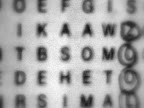The Newseum's "Covering Katrina" Exhibit Basically Gets it Wrong
When the Newseum re-opened with a downtown DC site in 2008, it got many friendly reviews. And the museum is fairly popular here. But it also got a batch of negative reviews, for being a self-congratulatory monument and not an objective undertaking. In the words of the Denver Post's Joanne Ostrow, it's "not so much a museum as a vanity project." Jack Shafer criticized the museum's "fetishizing of trivial relics" and called it a "stunning shrine."
The museum's "Covering Katrina" exhibit, which opened in August and will stay till next September, suffers from these same problems that infect the museum generally.
The exhibit tells of heroic work by journalists, focusing particularly on the Times-Picayune and the Biloxi Sun-Herald (each won a Pulitzer). That's all well and good. But the bigger picture of Katrina and the press is a negative one, not a positive one.
A big feature of national press coverage in the days after the storm, especially on TV, was on the anarchy and violence. The murders and rapes of children in the Superdome. The marauding gangs of armed men who in some cases shot at police officers. Civilians shooting at rescue helicopters.
The problem is that these stories turned out not to be true. They were rumors, in some cases passed on by top Nagin administration officials. The Times-Picayune helped tell the true story later that month.
The other story -- of police officer and white civilians shooting and in some cases killing unarmed black men -- has only really started to come out since AC Thompson's Dec 2008 piece in The Nation.
The national press did lots of great work during that first week. But they nearly universally got it wrong on the violence. The federal and city government effort quickly became too focused on restoring security, with at least some expense to other priorities -- rescue and health. The press's role in that process needs scrutiny.
The false narrative of Katrina as a tale of black civilian violence lives on today. Some national outlets such as the NYTimes ran pieces showing that the story of violence had been largely incorrect. But sadly that wasn't enough to undo the public perception from the initial "history" that we got for several days straight on TV after the storm struck.
The Newseum's exhibit does have one good panel on these issues. It should have been a primary theme of the exhibit.



0 Comments:
Post a Comment
<< Home